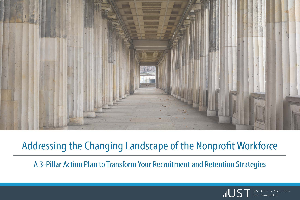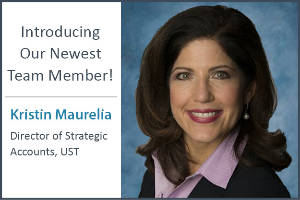
It is vital to the success of your organization that you approach employee compensation with the accuracy of metrics. Routine benchmarking of your salaries and benefits against those of your employment competition can help you retain valuable employees. Before you can offer the right pay, you must know what the competition is offering.
What Benchmarking Means to Your Retention
In order to reach your goals and fulfill your mission, you need to know what skills are required and how many people you need to achieve success. To determine the answers to these questions, you must analyze vital metrics including employee turnover, wages, opportunities for promotion and your organization’s hierarchy. Knowing this information can help you understand, identify and correct underlying weaknesses in your organization. If you’re hiring and training people only to lose them before your expense has been covered, studying key metrics on turnover rates combined with average wages may help you focus on the cause of your problem, be it pay, engagement, or something else entirely. From there, you can find employees and strategies that make for a better fit.
You then need to learn how to interpret and respond to the metrics you uncover. But don’t fear the answers you uncover—there is no “ideal” turnover rate, even within your specific mission. However, knowing where you fall within the range of employers in your geographic region and mission can help you make deliberate and informed choices in pay and benefits. Simply put, you won’t know what you can do until you see a complete picture of how you compare.
An annual benchmark report card covers all the basics, but if you find that a particular issue or program requires additional follow-up, which will most likely be the case, you should consider tracking it quarterly in order to continuously monitor key metrics.
Affordable Benchmarking: Nonprofits Helping Nonprofits
While paid data resources can provide detailed information, their costs generally reach beyond the budget of a small- or medium-sized organization. Fortunately, most states offer affordable resources for the information you need. The National Council for Nonprofits, a nonprofit itself, connects nonprofit organizations with localized associations that offer data-based best practices information. A quick review of the map will provide the contact information you need to get in touch with the nonprofit association in your state. For example, the Maine Association of Nonprofits (MANP) publishes a survey that describes the latest rankings of salaries and benefits for all participating nonprofits in the state. “Any nonprofit experiencing staff retention issues should, first, verify that their salaries correspond to regional benchmarks with other nonprofits,” said MANP Executive Director Jennifer Hutchins. “Once you have the data, your executive director should have a conversation with your board of directors ensuring that the organization is adequately investing resources in retaining the staff needed to achieve desired outcomes toward reaching mission goals.”
Maine’s association also provides other resources for nonprofits, such as training, advocacy and legal assistance. Their publication, Guiding Principles & Practices, provides a free online best-practices guide for nonprofit leaders including the chapter, “Staff & Volunteer Management.” The associations in most other states offer similar reports. For information on benchmarking against for-profit businesses, contact your state’s department of labor or your local chamber of commerce. Membership in associations vary by state and are usually based on a sliding scale so that newer or smaller nonprofits can take advantage of the information without financial hardship.
Nonprofits with larger operating budgets may be able to invest in research conducted by the Employers Council. This nonprofit provides help with Employment Law, HR, Training and surveys. While their fees are higher, you’ll find a broad scope of research that includes for-profit salaries and benefits. If most of your employment competition is coming from the for-profit sector, it may be worth the investment.
Start with Salaries
You went through a rigorous hiring process and found employees who formed a team that has created awesome results. But then, one by one, members of your team leave for other jobs. What went wrong? It may be tempting to solely blame the comparatively low financial picture of a nonprofit organization. However, there are winning strategies that the smart HR professional can use to retain employees longer, so the organization benefits from their professional growth and accumulating experience. It’s not just about money—nor is it just about the mission. Employees need you to understand that a complex blend of mission and compensation—including professional development—will help them stay with you longer.
Some salary benchmarking strategists argue that employees these days have a lot more access to compensation information on the internet. It’s true, there is more transparency than ever, but it doesn’t have to act against you. With the right benchmarking plan in place, you can make good use of this information. Bear in mind that low turnover can be a sign that you’re paying more than the standard. Finding a balance between overpayment and underpayment will only happen when you benchmark your salaries against the competition.
What Else to Benchmark?
Retaining personnel requires benchmarking information that goes beyond the hiring process. For example, knowing how often you promote from within could be a crucial factor in staff retention. You should dig deeper than this, of course. Say, for example, your organization diligently promotes male employees to management positions but fails to promote females at the same rate; this could signal a serious problem. It’s important to study all aspects of “promotions” as a topic in order to uncover issues.
The first step, of course, is to know where your organization stands by benchmarking your situation regularly. The ADP Research Institute (ADPRI) provides the benchmarks needed to gain a better understanding of employee retention in different organizations. This new data will help you measure the effectiveness of your diversity and inclusion programs. If your organization lacks such programs, this data will show how you compare to other employers who do have such systems in place.
It’s no secret that pay gaps between men and women still exist in today’s society. And yes, even in well-intentioned nonprofits, gender-based pay disparity remains a critical problem. If you catch this with benchmarking, it’s critical that you monitor the situation closely.
In an Ever-Changing Field, Knowledge Truly Is Power
You must be aggressive in pursuit of frequent benchmark updates. Stay abreast of your status in relation to compensation by industry and location. The employee you hired six months ago could go online today and discover new information on salaries and other perks that recently developed for a particular skill-set. With the shortages of skilled labor, transferable skills are more desirable today than ever before. The question then arises: How often should I benchmark? The answer is simple (though painful): How often do you want to be caught off-guard when a valued employee leaves?
Pay careful attention to your nonprofit’s annual calendar when planning your benchmarking activities. Find those times when you can move ahead with benchmarking, and then be sure to follow through consistently. Be sure to understand the particular needs of your nonprofit and know that it might not reflect what is measured in the for-profit business world. Of course, it’s valuable to study the metrics for your particular location. If you’re located in a region where the cost of living is higher than the national average, be sure to recognize and measure the degree to which it affects your employees’ ability to stay with you.
Retention Is Not Enough
Tracking retention, alone, is not the solution to all of your concerns. Some employees may be staying in place while waiting for a better opportunity to present itself. They’re not necessarily doing their best work for you, and they will not hesitate to leave when the chance arises. So, for the weeks, months or even years that they are occupying that position, don’t assume everything is good. More than retention, you need employee loyalty.
Try measuring who is satisfied in their job for the long term. How do you know what to measure? Business expert Jon Picoult listed nuanced metrics to prioritize:
• Ask the right questions on employee satisfaction surveys. How likely would it be for the staff member to recommend your organization as a workplace and why.
• Track your real referrals. When you interview job candidates, ask them if they were referred by a current or past employee.
• Track employee suggestions. A loyal employee is more likely to make suggestions for workplace improvements.
Whether you’re making your first foray into benchmarking employee retention, or you’re taking it to the next level with regular studies on employee loyalty, you’re already doing better than many other organizations. Remember to create and follow a solid benchmarking schedule to track this information frequently, and then you will be properly prepared to build and maintain your organization’s robust workforce. There truly is power in knowledge, and this is how you plug in.
This is an excerpt from UST’s eBook, “5 Vital Employee Engagement Practices to Foster a Desirable Workplace” in collaboration with Beth Black, Writer and Editor.

Question: What is the minimum amount of time that an exempt employee must work to be credited for the entire day?
Answer: If an exempt employee does any work, they must be paid for the full day—there is no minimum. For instance, if the employee came to the office for the first 15 minutes of their usual 8-hour day, then went home sick, they would be entitled to their full pay for that day.
The only exceptions to the Full-Pay-for-Partial-Day rule is during the employee’s first or last week of employment, when the employer is offsetting amounts received for civil service like jury duty or military leave, or when the employee is taking unpaid leave under FMLA.
Employers can, however, use an employee’s paid time off to fill in the gaps. So, if the employee had paid time off available in their PTO bank, the employer could use a partial day of that time to cover their absence. But if the employee was out of paid time off (or was never offered any), the employer would still owe them for the full day.
This Q&A was provided by Mineral, powering the UST HR Workplace. Have HR questions? Sign your nonprofit up for a FREE 60-day trial here. As a UST member, simply log into your Mineral portal to access live HR certified consultants, 300+ on-demand training courses, an extensive compliance library, and more.

Question: We’ve recently learned that one of our employees is planning to leave the company and has been applying for positions elsewhere. Can we terminate them?
Answer: Terminating employment because an employee is looking for work elsewhere isn’t expressly prohibited by law, but we wouldn’t recommend it. You might be surprised by how many of your employees are looking for other opportunities—either actively or passively—while still doing good work for your organization. If you start terminating everyone who is keeping an eye out for the next opportunity, you may find yourself with woefully few employees left. This is also the kind of organizational behavior that makes the water cooler news, hurts morale, and may even make it into an online review of your business. For all of these reasons, we’d suggest a different approach.
Instead of terminating this employee, you might consider talking with them to determine why they are looking for work elsewhere and what might motivate them to stay. There may be issues you can fix. In fact, a lot of employers regularly conduct both exit and stay interviews to get more insight into the reasons that their employees leave or what keeps them motivated to stay. This information helps them better engage their workforce and increase retention.
This Q&A was provided by Mineral, powering the UST HR Workplace. Have HR questions? Sign your nonprofit up for a FREE 60-day trial here. As a UST member, simply log into your Mineral portal to access live HR certified consultants, 300+ on-demand training courses, an extensive compliance library, and more.

No matter where society struggles or how much change comes to your nonprofit, everything always comes down to the people who form your team and support your community. If you lack the flexibility and resilience to confront perilous forces such as socioeconomic upheaval, a pandemic, or a workforce revolution, your organization runs the risk of collapse.
In order to achieve stability, nonprofits need to reinforce the steadfast support of a dedicated staff. Download the bundle to uncover strategies for:
For just $19, this information-packed bundle gives you access to a wealth of helpful resources—including our Changing Nonprofit Workforce eBook and Toolkit—filled with the tools you need to support a dynamic workforce.

From recruiting and training to engagement and retention, your organization has likely invested a great deal of time and effort into ensuring your volunteer program is successful. Volunteers make up an essential part of a nonprofit’s workforce—making effective volunteer management strategies vital to an organization’s day-to-day operations and key to developing and maintaining volunteers that are knowledgeable, passionate and dedicated.
In the latest rendition of UST Live, we were joined by thought leaders from across the U.S. with expertise in volunteer management. Discover how your nonprofit peers are improving volunteer retention rates while increasing engagement and what you can do to keep volunteers excited about the work your nonprofit does to support its surrounding communities in this on-demand recording of the session. You’ll also discover:
Upcoming UST Live Webinars: This webinar series was designed to equip nonprofits with the strategies and resources they need to survive (and thrive) in a constantly evolving environment. Be on the lookout for future UST Live sessions.

Are you conflict averse? For most folks, conflict can be a nasty trigger. It sets off the brain’s panic center—the amygdala—activating responses of fight, flight, freeze, or (new tactic for those who don’t mind how bad it makes them look) fawn to cope. It’s neither fun nor fulfilling to work in an office frequently disrupted by this type of energy. However, workplaces now abound with all kinds of people from a variety of backgrounds. Conflict is unavoidable.
Conflict is a reality of working life. All workplaces wrestle with conflicts of some sort at point or another. Because companies issue policies to mitigate such trouble as sexual harassment, discrimination, and the misuse of technology, they have provided better guidelines for HR departments to resolve weighty disputes sooner than later. However, conflict doesn’t require illegal behavior. If sentient beings work together, there will always be the potential for headbutting.
Under the right circumstances, an internal dispute may provide a company a way to become better informed and more resilient in facing flack in the marketplace. A company that fosters diverse talents and viewpoints among its crew will keep its eyes and ears open and its tactics flexible for problem-solving. A company smart enough to perceive conflict as a teacher may wield it to kick open new doors or avert unforeseen disaster.
What is Conflict?
A 2008 international study by CPP Global, publisher of the Myers-Briggs assessment tool, defined conflict as “any workplace disagreement that disrupts the flow of work.” The same year, a Psychometrics study in Canada described conflict as “a struggle that results when one individual’s concerns diverge from another person’s wants.” Indeed.com discerned that the first definition fits a negative view of conflict, while the second definition may goose the parties locked in confrontation to seek novel, potential win-win outcomes.
Common causes of conflicts among individuals include:
Employees responding to CPP’s survey cited personality clashes and egos (49%), stress (34%), heavy workloads (33%), poor leadership (29%), dishonesty (26%), unclear roles (22%), clashing values (18%), harassment or bullying (13%), and the perception of discriminatory practices (10%). Nearly one third (27%) had seen conflicts evoke personal attacks.
Tellingly, CPP respondents observed that conflicts were highest (34%) among frontline or entry-level employers—those likely untrained in conflict management.
Here are four types of team conflicts as formulated by Indeed’s career coach Jennifer Herrity.
As workplaces grow, more people connect and occasionally collide over different values and methods for doing their work. Negative conflict can manifest in arguments, difficult relationships, verbal abuse, harassment, bullying, or unethical behavior that affects the entire company. Positive conflict can inspire competition, motivate players to work harder for their goals, and tolerate confrontations over different strategies, which can give way to new and better approaches.
What Does Conflict Cost Us?
According to Human Resources Online, managers spend 15% of their work time mediating conflict. Workplace discord can freeze the pace of projects and deliverables. Where misunderstandings and resentments proliferate, an institution can hemorrhage time and money. Pollack Peacebuilding Systems unveiled its Workplace Conflict Statistics for 2022 with some eyebrow-raising data.
For nonprofits, employee retention is an existential issue. Any atmosphere made noxious by conflict can demotivate employees and volunteers who can leave to find a more hospitable gig elsewhere.
How Do We Handle and Resolve Conflict?
If you Google for answers on how to handle internal disputes, you can bag dozens of skills lists and even more pages detailing resolution techniques. Widely regarded as a leadership skill, conflict resolution is the art of addressing differences between two or more parties and finding common ground for everyone to work together. How HR departments investigate internal conflict and why it’s important to train employees in conflict resolution skills is vital to your nonprofit’s longevity.
HR Investigations
A company cannot let conflict fester until it damages the company’s process, employer brand, or consumer brand. It must also guard against a courtroom verdict that could damage the brand and bring ruinous financial loss. HR seeks to resolve disputes in-house whenever possible. Companies task their HR departments with fielding contention, and HR runs point until it is resolved or must be escalated to outside mediation, arbitration, alternate dispute resolution (ADR), or a court.
Your company should have an established internal complaint process for HR to follow as it investigates complaints. The Australian Human Rights Commission offers protocols for such a process, emphasizing the urgency to address complaints quickly and fairly—particularly complaints about workplace discrimination and harassment. With an internal complaint process in place, your firm can improve workplace practices and policies, raise staff morale, productivity, and retention, and avoid forwarding problems to external agencies or for legal action.
With a responsive complaints process, an employer can demonstrate the company took “reasonable precautions and exercised due diligence” to prevent discrimination or harassment. The policy, coupled with a consistent record of swift action, can make your organization look properly responsive if the complaint winds up with an investigative government agency or in court.
The Nonprofit Risk Management Center notes for nonprofits that, “There are various types of internal dispute resolution options, ranging from a very formal, binding mandatory arbitration procedure . . . to the informal open-door policy favored by most mid-sized and small nonprofits. Some options are:
NRMC assures that “an internal dispute resolution procedure . . . provides an outlet for employees’ concerns. A grievance or complaint procedure gives the employee his “day in court” and can be helpful for the nonprofit’s management because misunderstandings or unhealthy disputes between staff may be uncovered and addressed before the conflicts spin out of control. Serious concerns, such as sexual harassment between co-workers, can be uncovered and addressed by the nonprofit before a lawsuit is filed. The goal of internal dispute resolution is to solve the problems at the lowest level possible, so that workplace disputes don’t escalate into legal actions.”
How Peer Workers Can Help
Workers receive a variety of coursework and training during their onboarding period. It makes sense to offer training and certification in conflict resolution so that they may defuse workplace friction as it happens. In circumstances where a disagreement results from a basic miscommunication or a poorly defined workplace procedure, a well-trained employee with appropriate training could persuasively lower the temperature on a situation without having to formally involve a manager or HR. Training in such skills as observation and empathy can enable one coworker to see how another coworker might be misread by their peers because of such traits as autism, food allergies, color blindness, or other facets of our many diversities that may be invisible to others.
Returning to the CPP study for a moment, note that 76% of all workers who participated reported conflict creating positive results, improved problem-solving, and deeper insights about their colleagues. Pressure, as they say, makes the diamonds. CPP’s research suggests that the key to effective conflict management is developing the skills and mindset to deal directly with conflict. Instead of being conflict averse, one should embrace it as a process that yields good outcomes.
With growth, competitive pressure, warp-speed technology, and worker diversity, workplaces are becoming more like ecosystems where conflict is the natural byproduct of not the new normal, but the wildly unpredictable—a form of never normal. Savvy companies may see turmoil as a springboard for growth and a path to the future, keeping buckets on hand to catch the strange ore glimpsed under pressure.
This blog post was written by Amélie Frank, consulting copywriter to UST. To learn more about Amélie’s professional portfolio you can find her online at https://www.linkedin.com/in/amelie-frank/.

Some argue that they couldn’t prepare for the pandemic, because it was a black swan event—defined as unforeseeable. While that may be true, it’s imperative to develop and implement better defenses against future incidents—regardless of forewarning. Whether the next calamity is a virus, an extreme weather event, or something else, the effects to your nonprofit can be mitigated. Take strategic steps now to protect your clients, workers, continuity of services, and overall sustainability from whatever the future may bring.
Three Major Threats
Start by understanding and correcting three common vulnerabilities. First, study your supply chain and its logistics risks. Those with global supply chains may be at higher levels of vulnerability to any kind of worldwide incident. Next, make sure to complete your survival plan to manage your continuity in the event of any kind of shutdown or crisis. And third, understand that communication helps to reduce uncertainty, so develop a clear communication plan with your team and partners. Once you’ve taken these initial steps, you’re ready to deep-dive into real preparedness.
Three Keys to Recovery
Nonprofits strengthen their resilience through robust, faster, and more inclusive post-disaster rebuilding. When the process is robust, organizations become less vulnerable to future disruptions; when it’s fast, people can get back to their normal life earlier; and when it’s inclusive, nobody is left behind in the recovery process. Now, imagine that public and private stakeholders across the land are performing the same process. This can include small and large governmental agencies, for-profit companies, private citizen groups, and nonprofit organizations. Encourage your nonprofit to join the conversation, as everyone pulls together to build back better, with faster communication, inclusive thinking, and robust planning.
The Unfolding Future and Disaster Risk Reduction
The effects of climate change are already increasing destruction and the risk of life globally. Many are already seeking ways to mitigate and prepare for upcoming disasters. Flood, fire, and disease are on the rise, as we continue to survive through natural disasters such as earthquakes and tsunamis. The United Nation’s 2015 Global Assessment Report on Disaster Risk Reduction (GAR) predicted that “the risk of economic losses is rising as a result of the rapidly increasing value of assets that are exposed to major hazards.” In addition, a large proportion of losses continue to be associated with small and recurring disaster events that severely damage critical public infrastructure, human lives, animal and wildlife, agriculture, housing, and production.”
It is no longer practical to put off disaster preparedness in the hope that it won’t happen. True, nonprofits must work within limited budgets, often relying on the ingenuity of their leaders. Because of this, the best plan for long-term resiliency is to integrate sustainability into everything your nonprofit does. Resilience means that your nonprofit will be able to adapt and recover rapidly from disruptions due to emergencies.
No matter how devastating an emergency might be, recovery can take place. It might require months or even years, but when communities work together, balancing short-term objectives and long-term goals, involving all stakeholders, and following a common vision for the future – they can pull together funding from more sources, additional technical support, and information gleaned from other nonprofits to build back better, stronger, more adaptable, and more resilient.
The good news is various programs are now available to reduce the impact of natural, technological, and human-made events on your nonprofit’s community. The National Hazard Management Association (NHMA) has developed the Disaster Risk Reduction Ambassador Curriculum (DRR) in cooperation with FEMA. The DRR Ambassador Curriculum helps community stakeholders find ways to understand and prepare to implement programs and measures handling the entire disaster cycle – pre, during and post disaster. This supports nonprofit and other community leaders as they engage in community-level discussions with multidisciplinary educational resources, self-study materials, and training workshops. You will find three stand-alone modules, each taking about 1 to 2 hours to complete. Whether or not you can complete this training, your nonprofit could benefit from the aid of a DRR Ambassador. They come from various backgrounds and groups with the goal of helping their communities take strong proactive steps to mitigate risks from natural hazards. Bold decision-making comes from a process of education and discussion, but the rewards will take your organization beyond the minimal protection provided by existing federal standards.
DRR Ambassadors use a reference guide titled Building Your Roadmap to a Disaster Resilient Future. The Roadmap provides ideas for community disaster risk reduction along with explanations and hyperlinks to a wide array of technical and other resources needed at various junctures. Communities that avail themselves to NHMA’s program are clearly better prepared to face natural disasters in the future.
The Seven Basics
Here are seven important steps to a stronger, more resilient future:
Conduct annual risk assessments. Begin by seeing the potential scale of a hazard. Three areas deserve special consideration in gauging risks:
Cross-train employees with a clear training plan. Do your best to triage topics so they learn CPR and first aid first. Teach an escape plan, disaster preparedness, and preparation for other risks to life. Additionally, help employees train to work in additional roles and under different working conditions, such as a temporary worksite.
Stock up on supplies. Your team might be required to shelter in place at the office. Are you prepared with three days of shelf-stable food and water—enough for everyone? Remember to keep fresh hand sanitizer, anti-bacterial wipes, gloves, masks, flashlights, batteries, blankets, and phone chargers well-stocked for emergencies. Note expiration dates.
Save for a rainy day. Try to build up a cash reserve equal to three to six months of your nonprofit’s expenses. A 3-month fund should be considered bare minimum. If you have a 6-month fund, you will be prepared for unexpected opportunities.
Put your people first. Enact policies to address your staff’s needs during an emergency. Help them handle their primary concern, their families, so they can then focus on your nonprofit. Plan for work-from-home options and possibly providing childcare. Also, take some time each year to review your paid leave, health insurance, and sick leave policies. How might you build in more flexibility? Set guidelines for hazard pay to help those working in essential roles under tough conditions. Show them they are valued to motivate your team during challenging events.
Re-examine and diversify your fundraising efforts. If you’ve always relied on an annual gala event, it’s time to consider additional funding options. Build your adaptability in the event of closures. If you already have a variety of sources, conduct an audit to see which are the most successful and find ways to grow those.
Apply what you’ve learned. The pandemic provided vast learning opportunities. Explore all your strategies—from policies that protected your employees’ health to ways you handled financial losses. What worked? What didn’t? Consult your organization’s stakeholders including experts, like accountants and lawyers. Be proactive in fixing what didn’t work and promoting what did.
Agility and the Post-COVID Landscape
Are you exhausted from deploying stop-gap measures? Have you been slashing budgets, shifting services online, and doing whatever else you can to help your community and protect your nonprofit? The truth has become obvious. Each challenge is only one in a series of ongoing crises that will continue to threaten your organization. You must develop a frame of mind that continuously generates fresh, new solutions – with creativity and resourcefulness. Integrating sustainability is key to adapting more rapidly to crises. Those organizations that were committed to this before the pandemic struck were better able to navigate the challenges it brought.
Many nonprofits discovered to their dismay that the tools and policies they had in place as pre-planning prior to COVID failed to manage the speed, scale, breadth, and duration of all the pandemic’s impacts. Advance investments in your human and social capital that will help. Your team’s awareness of several potential pressures that could combine toward disaster will help you move toward best-practice management of your potential risks.
While you deploy stress tests and other exercises to prepare for the future, think about how your team has communicated during the pandemic. Everyone was forced to reconsider presuppositions and communicate clearly, no matter how fluid the situation. So now, you must encourage innovative thinking, rehearse dynamic situations and seek to empower your workers to own and manage risk within their scope of influence. This is one way of weaving resilience into the fabric of your organization’s culture. Investing in your staff first, helping them to communicate effectively with stakeholders, and building their leadership skills will position your nonprofit to better navigate future crises.
You’ve seen how everything is connected. Natural events, social order, and economic systems all flow together to impact your nonprofit. More than ever, events strike with ferocious speed and impact requiring sudden changes in strategy. We will continue to feel the increasing effects of climate change, deepening inequality, biodiversity loss, political upheaval, and more. Work with your nonprofit’s leadership to be clear, decisive, and authentic in all communication with the team so that everyone places their priorities in alignment, and your organization will be better prepared to pivot.
The following guiding principles have helped other nonprofits maintain their equilibrium as they’ve worked with donors, boards and government agencies to spark endless innovation:
• Keep going. Your ability to pivot might not always look perfect, but it will fail completely if you allow yourself to be stopped by disruptions. Many nonprofits were deeply challenged by the shift to virtual services, but those with an unrelenting attitude were eventually able to adapt. You must keep moving, trying, pushing, and innovating.
• Question fundamental assumptions, so you can imagine being part of a changed future. Take time to evaluate the changing political, physical, social, economic, and health needs of your community and targeted population. How should your mission and vision change? Be sure to test the appropriateness of multiple approach options, then explore how you might scale your chosen best result, and finally how you might escape the drag of longstanding processes that restrict fresh approaches. These three steps will empower you to solve complicated challenges.
• Focus on the most vulnerable. While it’s important to work toward larger dreams for the future, try to avoid leaving behind marginalized community members. Solutions that you devise for the most marginalized populations will find their way to help the larger society, too.
• Small steps add up to big changes. Start with small, rigorously tested ideas. Your methodology will mean everything as you design a process for continuous, everyday innovation. Start with one small problem. Generate promising ideas. Then, come up with early prototypes so that you can test, gauge, and improve whichever one has the best potential to make the most impact. Rapid prototyping is a more flexible and cost-effective approach than major initiative launches.
With each bit of urgency in a crisis, there is also opportunity. Innovate by surveying community members, brainstorming ideas, and rapidly developing simple prototypes of the most promising solutions. Start with the most severely impacted in a crisis and scale it up later. Seizing the moment could help you lead your nonprofit past whatever has blocked change in the past. You might feel like you’re building the jet plane during take-off, but when you factor in creativity, energy, enthusiasm, and constant learning … your odds of staying aloft are good.
Aim Toward Social Purpose
While many nonprofit leaders feel pressured into focusing on financial health, a broader view will help in providing more sustainability. Social purpose, with a clear understanding of your desired impact, will guide your decisions as you seek to balance your budget against your capacity to deliver impact. COVID-19 will eventually retreat into the past, but it has left in its wake a lasting effect on how we determine our effectiveness. Keeping social purpose in mind, follow these priority takeaways:
• Social Impact. No matter how society shifts, a sharp focus on your intended impact and theory of change will help you stay relevant. If you’re forced to forge new partnerships, alter your services or advocate in new ways, reexamining your social impact is critical to informing all decisions. As community need rises, develop new ways to deliver services while maintaining public support.
• Economic Viability. If you’re struggling to handle increased demand with disruptions in funding, you’re not alone. These destabilizing conditions could threaten your long-term financial wellness, and some threats will no doubt continue in the future. Sustainable nonprofits must have reliable funding and predictable expenses as well as cash on hand for routine and emergency expenses. Develop processes for managing your financial viability. First, take a clear and detailed assessment of your financial situation. Second, plan for various financial scenarios and emergencies. Finally, be honest with all your stakeholders including donors. Ask the tough questions, such as who plans to donate again. For better planning, you need to know.
• Capacity to Deliver. Four core ideals will help you maintain services. First, you must set up a strong and distributed leadership that can pivot in response to dynamic challenges. Second, your team must be flexible, recognizing potential changes in member needs, client behaviors, and the general community landscape. Third, look for more ways to collaborate with other nonprofits and agencies. Consider public-private partnerships. Make sure your cultural values are clear, give your team cooperative skillsets, and build incentives from the top-down, so your leaders model collaboration. Fourth, build your capacity for technological improvements. Work out the training your staff will need and establish whether technology can help you scale up services while lowering your long-term costs.
Under the Radar
Most companies have a new take on teleworking, which will change where people live. Depending on the nature and location of your mission, you might notice a subtle shift in populations. COVID-19 and other recent events have sparked this interest in landscapes amenable to social distancing, home-centered work, and a small-town quality of life. In ways similar to those wrought by the last century’s industrial revolution, macro-socioeconomic shifts caused by the pandemic could mean big changes are coming. Eventually, large cities could see decreased demand for services while small-town nonprofits experience growth in supportive community members.
Your new battleground might be at the digital divide, fighting to provide reliable high-speed internet access to all, especially in rural areas. Nonprofits and NGOs should recognize the opportunities for local communities collaborating to put the COVID crisis behind, overcome the challenges of social unrest, and work together toward solutions. It shouldn’t surprise you to learn that real estate agents in small towns across America have become partners toward social change, as the National Association of Realtors published information on equity, stabilization, and developing community engagement for their members.
Rural and suburban communities are remaining online. In fact, growing their online presence, like online crowdfunding, becomes a viable financial resource for nonprofits. Most of all, keep your eyes open for further societal evolution—perhaps, the next macro-adjustments will alter the very core of your nonprofit.
This is an excerpt from UST’s eBook, “3 Key Strategies for Nonprofit Resiliency: Preparing for Future Crises” in collaboration with Beth Black, Writer and Editor.

O, humble employee handbook! Nonprofit employers count on you to provide organizational best practices to their workforce while ensuring they maintain compliance standards. Unfortunately not enough attention is paid to updating the handbook as there should be—placing these employers at risk.
Today, companies put the handbook online, posting anything from a 2,000-page guide for GitLab to a 5×8” gray card for Nordstrom that reads “Use your good judgment in all situations.” One thing about the employee handbook has not changed. It remains invaluable and indispensable to its company and their employees.
Do you know what a help an employee handbook can be for your nonprofit, your workers, and your constituents? Let’s break the handbook down to its core elements to see what makes it so powerful and beneficial.
Employee handbooks contain both policies and procedures. What is the difference between a policy and a procedure?
A policy is a principle or rule that governs decisions and actions. It functions within the framework of a company’s mission as set by management. Policies include rules for employees regarding smoking, non-disclosure agreements, vacations, dress codes, technology use, and plenty more.
Policies have scope (covering all workers) and purpose (the law that necessitates the policy). Policies promote consistent conduct and equal treatment of all employees, keep employees mindful of their duties, and help the organization comply with the law. Noncompliance can result in fines, lawsuits, loss of the company’s reputation, or risk for the employees.
Finally, policies change as the company grows, as the larger industry evolves, and as new laws and technologies arise. With good policies in place, companies and their employees can thrive in a safe, secure environment. They stabilize a company, enabling it to avert or manage workplace incidents (like an accident) or crises (like a pandemic). They hold management accountable, uphold expectations for the workers and set behavior and performance standards so that everyone can achieve success. As personnel come and go, policies sustain resilience and continuity for the institution because they will always tell new employees exactly what to do. Without policies, a company would run on chaos, but not for very long.
A procedure is a reliable process broken down into a series of steps to attain a desired result. They are instructions adopted by management to carry out policy. While policies offer the why behind a company’s actions, procedures advise how to carry out those actions. A procedure also has scope (a specific employee performing a task and who they report to) and may not apply to everyone working at the company. Procedures are required for training, process auditing, process improvement, and or compliance initiatives. They guarantee the consistency that decreases process variation, which increases procedure control. Decreasing process variation eliminates waste and boosts performance. The best procedures are written in simple, clear, and concise language.
Compiling policies and procedures into a well-organized document accessible to everyone isn’t just a good idea. It can be a lifesaver. Can you imagine police and fire departments without well-managed policies and procedures? How about the law firm or brokerage handling your personal affairs? Or the lab manufacturing your child’s asthma inhaler? Smart policy and its consistent administration ensure safer communities, safer products, and safer work spaces. They are fundamental to any nonprofit’s long-term success.
Some companies issue a policies and procedures manual, a detailed repository of every policy and procedure, even those that don’t concern employees. Other companies issue an employee handbook, which covers everything pertaining to employees, their responsibilities, and the company’s responsibilities to them. For nonprofits, an employee or volunteer handbook would include protocols for donor privacy, fundraising, whistleblowers, records retention and destruction, in-kind gift acceptance, and other situations specific to philanthropic institutions and the laws that regulate them.
Some entities issue both, providing the employee handbook to staff and posting the voluminous policies and procedures tome on the company intranet in case someone needs detailed information about a particular subject (corporate history, news articles, etc.).
Of the two, the employee handbook is the more essential document for the following reasons:
With the increase in flexible work schedules and more employees working off site, companies are putting their employee handbooks and policies and procedures guides online. For many, this is more convenient and efficient—and it saves on the cost of printing. But wait! There’s more! Companies are putting their entire policies and procedures guides live on the internet for everyone to see. Why would they do that?
Many of these electronic handbooks come from newer companies or tech firms to demonstrate their commitment to corporate transparency. Such firms include Basecamp, Trello, Netflix, Zappos, Hubspot, Nordstrom, Sterling Gold Mining Corporation, Facebook, and Twitter (likely rewriting their employee handbook very soon).
Some of these handbooks are masterful achievements in design, copy writing, and corporate branding. And they are unique. Regarding Twitter, EmploymentSolicitor.com challenged other law firms to help create The Employment Solicitor.com Twitter Staff Handbook, with policies stated in 140 characters or less. Meanwhile, Netflix kept it simple: “Act in Netflix’s best interest.” These are not your daddy’s employee handbook! Did I mention these handbooks are downloadable?
Beyond their novelty, publicly accessible handbooks reap handsome rewards for their companies. Obviously, they don’t post anything confidential online for legal reasons, but everything else they share with an eye toward burnishing their employer brand as well as their products and services. As they give visitors a taste of their company culture, they get to market millions of eyeballs for minimal expense.
They can also attract desirable employees: Check out our benefits! See how well we treat our employees! Note how committed we are to the environment! Plus, it’s a useful way to engage potential donors or volunteers who are doing their homework before contributing to your cause.
It’s all there for the whole world to see, yet it still serves as the employee handbook. Expect this to become standard operating procedure for many companies, including nonprofits. The more things change, the more handbooks will need updating. Updating online is simple and inexpensive.
According to a survey conducted in 2020 for People Matters, a media company specializing HR marketing, 57% of employees actually read the employee manual. When asked if they had revised their employee manuals since the pandemic, 69% of HR professionals surveyed said no. How are these unread, outdated handbooks meeting the needs of their companies? The answer is that they aren’t.
When your nonprofit decides to invest time and money to produce an employee handbook, you will find countless resources online that can help, but…
UST understands those needs because we are the leader in the field of nonprofit HR solutions. Through our cloud-based UST HR Workplace, powered by Mineral, we offer on-demand resources and expertise to help create the employee handbook your foundation needs . . . in minutes. UST’s integrated platform of HR tools, templates, and on-demand trainings will ensure that your employee manual meets your standards while maintaining compliance with federal and state law. The platform will alert you whenever a policy or law that can affect your handbook changes. And, you can track employee acknowledgments with built-in electronic signatures. With a subscription to the UST HR Workplace, your handbook will stay current and relevant for your peeps. Request a FREE 60-Day Trial of the UST HR Workplace today!
This blog post was written by Amélie Frank, consulting copywriter to UST. To learn more about Amélie’s professional portfolio you can find her online at https://www.linkedin.com/in/amelie-frank/.

UST is very pleased to welcome Kristin Maurelia as our new Director of Strategic Accounts!
Kristin’s accomplishments are not easy to summarize. Notably, she was asked to lead a new strategic alliances initiative at the National Association of REALTORS®—the world’s largest trade association with over 1.5 million members. Kristin built from inception, a strategy and business unit that grew to over 160 dynamic, creative alliances, including some of the nation’s largest companies and strongest brands—ultimately generating more than $100M in association revenue and providing valuable member benefits to the tune of $75M annually.
Driven by genuine curiosity and a commitment to building authentic relationships rooted in integrity, Kristin has forged impactful, long-term partnerships with allies across various industries. With a passion for mission-driven work and a call to community service, Kristin is also an active member of the nonprofit community, serving as a volunteer for Pilot N Paws and Be My Eyes.
Kristin’s extensive experience, proven track record, and shared desire to see the nonprofit sector thrive make her a perfect addition to team UST and an ideal ally for our 80+ plus Affinity Partners nationwide. We’re very excited to begin UST’s next chapter with her at the helm of this vital role in our organization.

Question: Are depression and anxiety considered disabilities?
Answer: They can be, yes. Under the Americans with Disabilities Act (ADA), a disability is defined as “a physical or mental impairment that substantially limits one or more major life activities.”
Some examples of major life activities are caring for oneself, performing manual tasks, eating, sleeping, speaking, breathing, learning, reading, concentrating, thinking, communicating, and working. A major life activity also includes the operation of a major bodily function, such as neurological, brain, and respiratory functions.
Although the condition must “substantially limit” a major life activity, this term is broader than you might think. “Substantially limits” doesn’t mean that the condition has to prevent or significantly restrict a major life activity. Rather, the comparison is between the employee’s level of functioning as compared to most people in the general population. It is not a demanding standard.
If an employee informs you that they have anxiety or depression and requests an accommodation, you should begin the interactive process. Basically, you and the employee determine what, if anything, can be done to accommodate them so that they can perform the essential functions of their job and have equal benefits and privileges of employment. As part of this conversation, you may require the employee to provide documentation to support their request for an accommodation.
This Q&A was provided by Mineral, powering the UST HR Workplace. Have HR questions? Sign your nonprofit up for a FREE 60-day trial here. As a UST member, simply log into your Mineral portal to access live HR certified consultants, 300+ on-demand training courses, an extensive compliance library, and more.

UST maintains a secure site. This means that information we obtain from you in the process of enrolling is protected and cannot be viewed by others. Information about your agency is provided to our various service providers once you enroll in UST for the purpose of providing you with the best possible service. Your information will never be sold or rented to other entities that are not affiliated with UST. Agencies that are actively enrolled in UST are listed for review by other agencies, UST’s sponsors and potential participants, but no information specific to your agency can be reviewed by anyone not affiliated with UST and not otherwise engaged in providing services to you except as required by law or valid legal process.
Your use of this site and the provision of basic information constitute your consent for UST to use the information supplied.
UST may collect generic information about overall website traffic, and use other analytical information and tools to help us improve our website and provide the best possible information and service. As you browse UST’s website, cookies may also be placed on your computer so that we can better understand what information our visitors are most interested in, and to help direct you to other relevant information. These cookies do not collect personal information such as your name, email, postal address or phone number. To opt out of some of these cookies, click here. If you are a Twitter user, and prefer not to have Twitter ad content tailored to you, learn more here.
Further, our website may contain links to other sites. Anytime you connect to another website, their respective privacy policy will apply and UST is not responsible for the privacy practices of others.
This Privacy Policy and the Terms of Use for our site is subject to change.
UST maintains a secure site. This means that information we obtain from you in the process of enrolling is protected and cannot be viewed by others. Information about your agency is provided to our various service providers once you enroll in UST for the purpose of providing you with the best possible service. Your information will never be sold or rented to other entities that are not affiliated with UST. Agencies that are actively enrolled in UST are listed for review by other agencies, UST’s sponsors and potential participants, but no information specific to your agency can be reviewed by anyone not affiliated with UST and not otherwise engaged in providing services to you except as required by law or valid legal process.
Your use of this site and the provision of basic information constitute your consent for UST to use the information supplied.
UST may collect generic information about overall website traffic, and use other analytical information and tools to help us improve our website and provide the best possible information and service. As you browse UST’s website, cookies may also be placed on your computer so that we can better understand what information our visitors are most interested in, and to help direct you to other relevant information. These cookies do not collect personal information such as your name, email, postal address or phone number. To opt out of some of these cookies, click here. If you are a Twitter user, and prefer not to have Twitter ad content tailored to you, learn more here.
Further, our website may contain links to other sites. Anytime you connect to another website, their respective privacy policy will apply and UST is not responsible for the privacy practices of others.
This Privacy Policy and the Terms of Use for our site is subject to change.